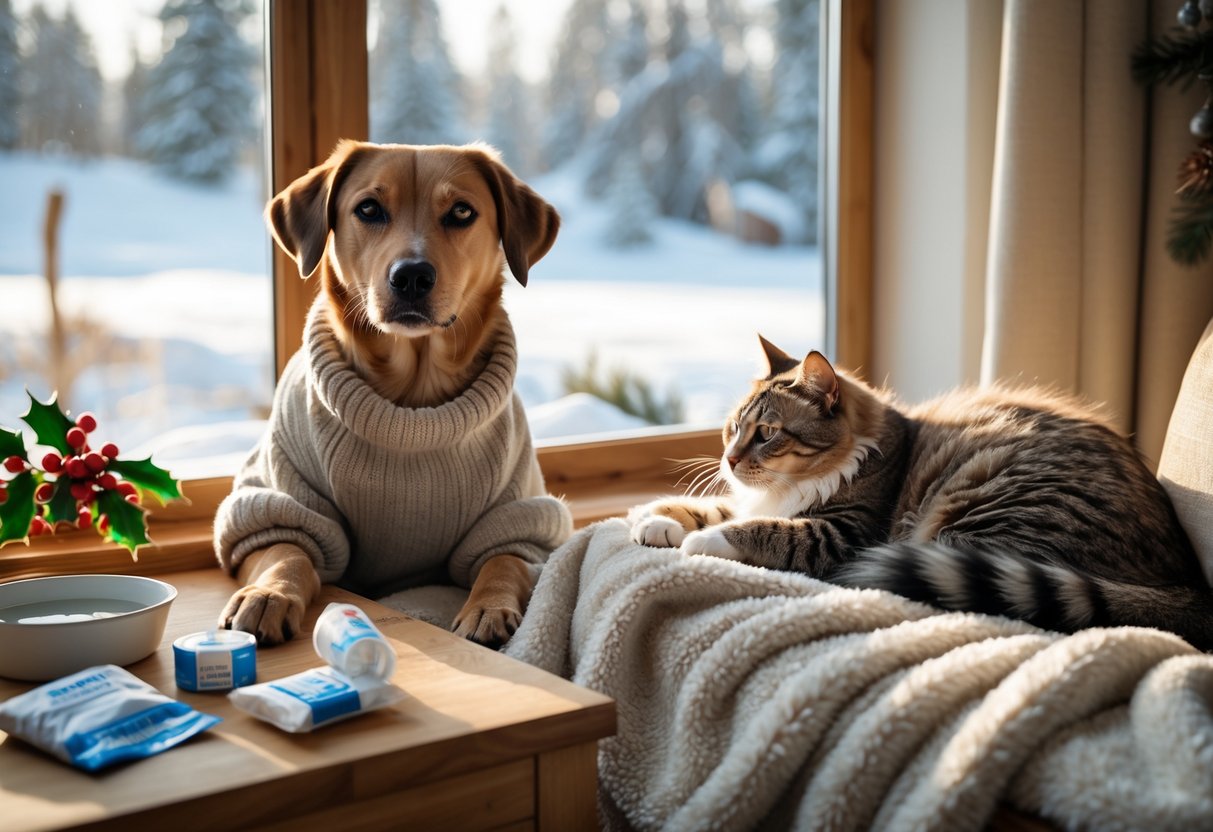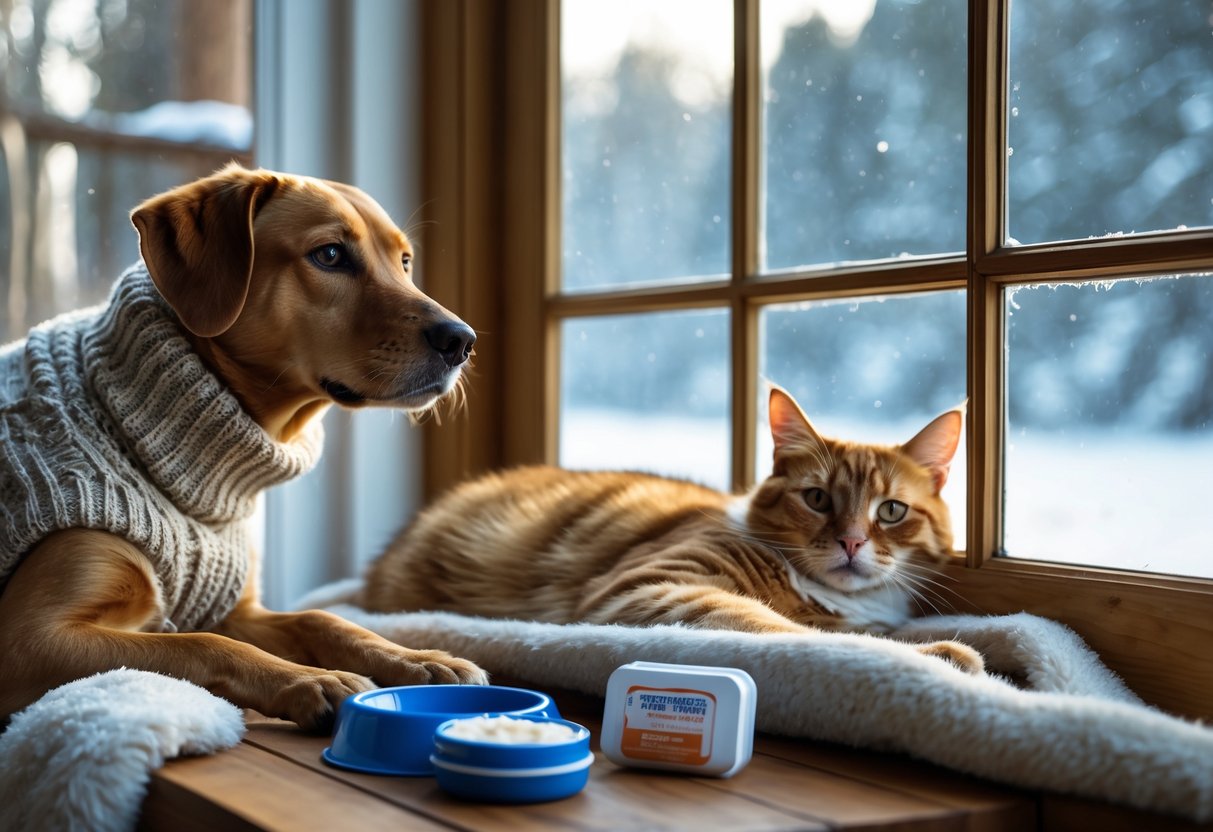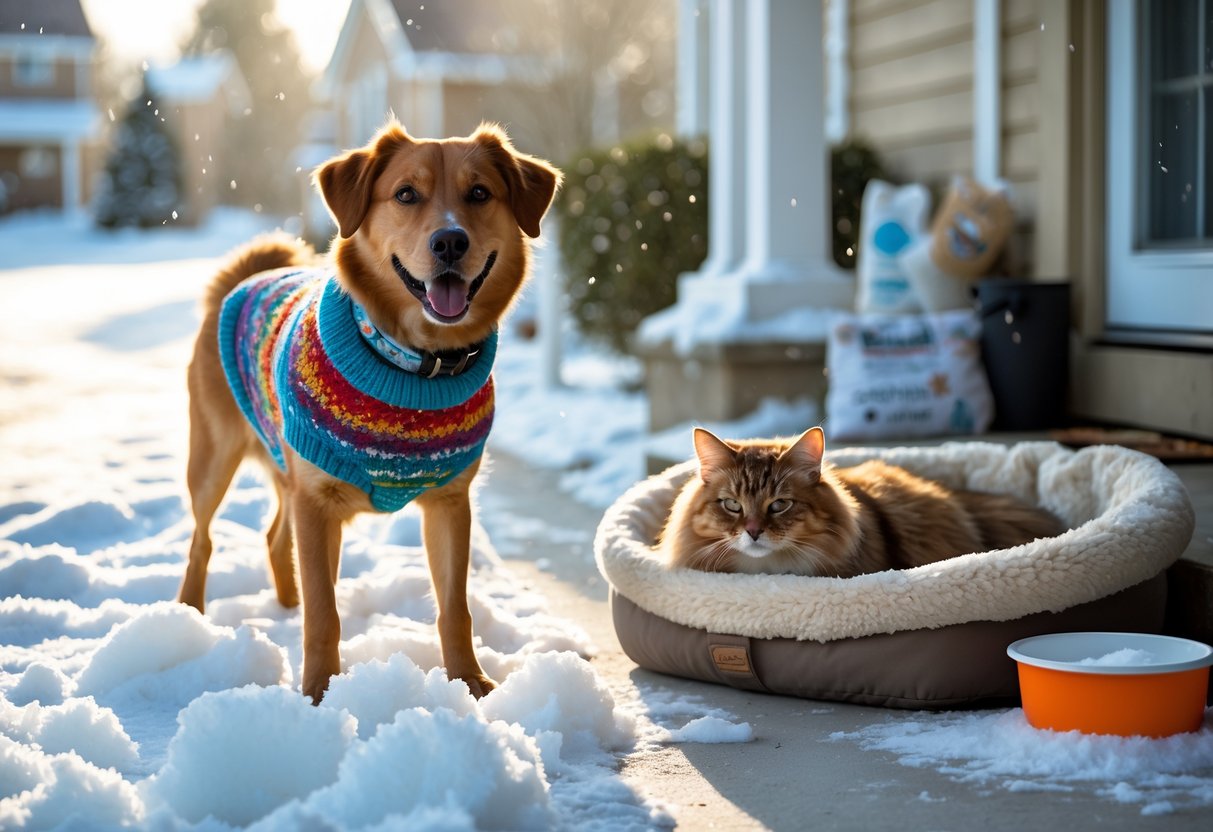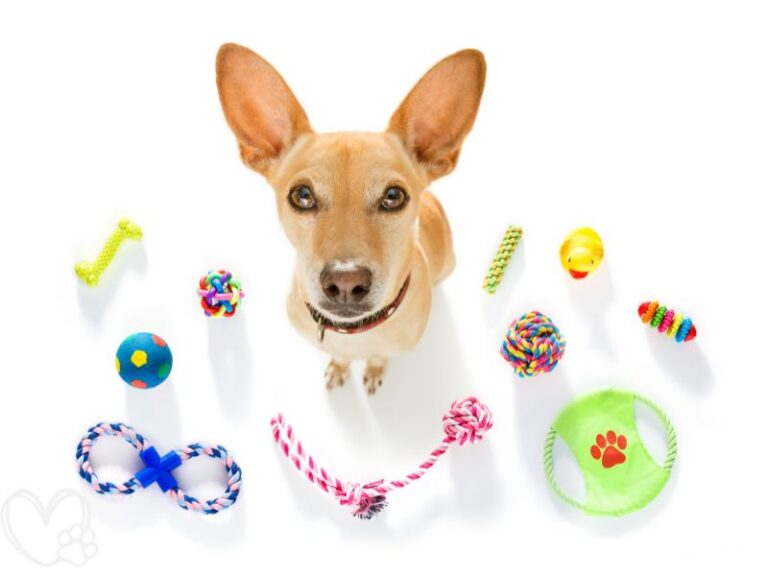Winter brings its own set of health risks for pets, some of which can catch you off guard. Exposure to cold isn’t just uncomfortable—it can lead to frostbite or even hypothermia.
Keeping your pets safe means making sure they’re warm, steering clear of dangerous chemicals like antifreeze, and providing real shelter and care when the temperature plummets.

Dry, cracked paws from ice and salt, plus toxic stuff on the roads, are common winter headaches for pets. Cold stress is another risk that sometimes gets overlooked.
Try using protective paw balms, pet-safe ice melts, and limiting outdoor time in nasty weather to help reduce these problems.
Knowing about these dangers is half the battle. The rest is being ready to act quickly to keep your furry buddies healthy through the winter months.
This article will walk you through the main winter health hazards and some down-to-earth ways to keep pets safe.
Major Winter Health Risks for Pets
Winter can throw some serious curveballs at your pet’s health. We’re talking about everything from brutal cold to dangerous chemicals and sudden emergencies.
If you know what to watch for, you’re way ahead when it comes to keeping your pet out of trouble.
Hypothermia in Pets
Hypothermia sets in when your pet’s body temperature drops too far. It’s especially a worry for small breeds, pets with thin coats, and the very young or old.
Watch for shivering, sluggishness, slow movements, or gums that look pale or bluish. If things get bad, your pet might seem confused or just plain out of it.
To avoid hypothermia, don’t let pets stay outside too long in the cold. Dry, warm bedding helps, and wet fur is a big no.
If your pet shows any of those signs, bring them in right away, wrap them in blankets, and call your vet if you’re even a little unsure.
Frostbite: Warning Signs and Prevention
Frostbite tends to hit ears, tails, paws, and noses hardest. You might spot pale, cold skin that later turns red and sore as it warms up.
Severe frostbite can leave tissue hard or even blackened—definitely not something to ignore.
Don’t let your pet stay out long in ice or snow, especially when it’s really biting cold. Booties and warm coats don’t just look cute—they help a lot.
If you think your pet’s got frostbite, gently warm the area with a towel and get to your vet fast.
Antifreeze Poisoning and Other Toxic Threats

Antifreeze is one of those things that’s way more dangerous than most people realize. Even a tiny bit can be deadly, and it’s got a sweet taste that attracts pets.
Signs of poisoning show up fast—vomiting, weakness, maybe even seizures or extreme thirst. If you wait, kidney failure can set in.
Keep all chemicals locked up tight and clean up any spills right away. If you suspect your pet’s gotten into something toxic, don’t wait—head to the vet immediately.
Recognizing and Responding to Cold-Related Emergencies
Some cold-weather emergencies need quick thinking. Watch for severe shivering, trouble breathing, weakness, a slow heartbeat, or even unconsciousness.
These can be signs of hypothermia or frostbite complications that need urgent care.
If you see these, get your pet somewhere warm. Use blankets and maybe a warm (not hot!) water bottle, but skip direct heat like hairdryers or heating pads.
Call your vet right away—don’t try to tough it out alone.
Practical Strategies to Keep Pets Safe in Cold Weather
It’s not rocket science, but it does take some effort to keep pets safe when it’s freezing. Pay attention to how long they’re outside, what they’re wearing, and how cozy their indoor spots are.
Sometimes just a few tweaks make a world of difference for their comfort (and yours, honestly).
Cold Weather Pet Safety Tips

When it’s below freezing, limit outdoor time. Short-haired and smaller pets get cold faster, so a sweater or coat isn’t just for looks—it’s practical.
If your pet’s shivering, whining, or holding up their paws, it’s time to come inside.
Ice is another hazard—pets can slip or get frostbite on exposed skin like their ears or tails. It’s easy to forget, but it happens.
Don’t leave pets outside overnight or alone for long stretches in rough weather. If it’s too cold for you, it’s probably too cold for them.
Protecting Paws and Skin from De-Icers and Elements
Salt and ice-melting chemicals can really irritate paws. Rinse your pet’s feet with warm water after walks to get rid of any residue.
Pet-safe booties are a good option, though not every animal will tolerate them. If not, try a paw balm or wax before heading out.
Check their paws and skin for cracks, dryness, or redness. Winter air can be rough on sensitive pads.
Keep their nails trimmed, too—it helps prevent painful splits on frozen ground.
Winter can be tough on pets, but a little extra care goes a long way. If you stay alert and make small adjustments, you’ll help your furry friends get through the season happy and healthy. And hey, it’s worth it for those cozy nights in together, isn’t it?
Indoor Comfort and Environmental Adjustments
Try to set up a cozy sleeping spot that’s tucked away from any drafts. A soft bed, maybe lifted a bit off the cold floor, can make a big difference.
If your home gets super dry from the heat running all the time, a humidifier might be worth considering. It can really help your pet’s skin and coat stay in better shape.
Double-check that the temperature inside feels right for your pet. Beds near chilly windows or doors? Probably not the best idea.
Don’t forget about water—pets can get dehydrated just as easily in winter. Fresh water should always be within reach for them.
Grooming regularly helps get rid of snow and dirt from their fur, which keeps them drier and warmer. It’s a little thing, but it adds up.
All in all, a bit of extra attention to your home’s environment can make winter a lot more comfortable for your pet. It’s worth the effort for their happiness (and yours, honestly).


